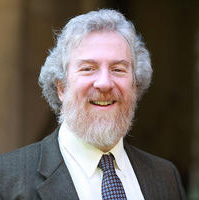Healing of Body and Soul (Part 1)

In addition to the well-known mi sheberakh prayer for healing recited (or sung, in modern versions) during the Shabbat Torah Service, our liturgy engages with the theme of healing in the weekday ‘Amidah, in the blessing that begins, “Refa’einu Adonai veneraf’ei, hoshi’einu venivashe’a” (Heal us, Adonai, and we shall be healed, save us and we shall be saved). The blessing continues, asking for complete healing (refu’ah sh’leymah) for all among the People of Israel who are unwell.
The blessing’s opening words are perhaps the most intriguing and challenging, for they are quoted directly from Jeremiah (changed only by transforming the first person singular into the plural—I becomes we). However, the context of Jeremiah’s words suggests that a more complex process is at work. In Jeremiah 17:13–15, we read:
Adonai, the hope of Israel, All who forsake You will be put to shame. Those who turn away on earth will be written down, Because they have forsaken the fountain of living water, even Adonai. Heal me, Adonai, and I will be healed; Save me and I will be saved, For You are my praise. Look, they keep saying to me, “Where is the word of Adonai? Let it come now!”
Now, it is certainly the case that Jeremiah invokes the concept of healing, and that the Hebrew word used is from the root that is now the basis of conventional medical healing: a physician in Hebrew is, of course, rofeh. However, Jeremiah does not seem to be asking to be healed from any medical condition—“healing” is, in this passionate request, set in poetic parallel to “salvation,” and Jeremiah is seeking an end to spiritual anguish rather than a cure for the flu.
Perhaps this is the basis of the well-known and widespread phrase that appears in the mi sheberakh formula, “refu’ah hanefesh urefu’at haguf” (healing of body and healing of soul). By invoking this text from Jeremiah, we assert and affirm the intrinsic connection between bodily and spiritual healing. We do not, of course, in any way discount the profound and critically important works of skilled physicians in diagnosis and medical care, but we acknowledge that the body does not exist alone and that the soul is intimately linked with it—the soul is always engaged in the process of healing and is sometimes the principal player.
We wonder always what response Jeremiah found to his inner anguish. Certainly it was not penicillin—but it may have been the healing waters of Torah.
Next week we explore further the liturgies of healing and their meaning.
As always, I am interested in hearing comments and reflections on these thoughts about prayer and liturgy. You may reach me at sabarth@jtsa.edu.



